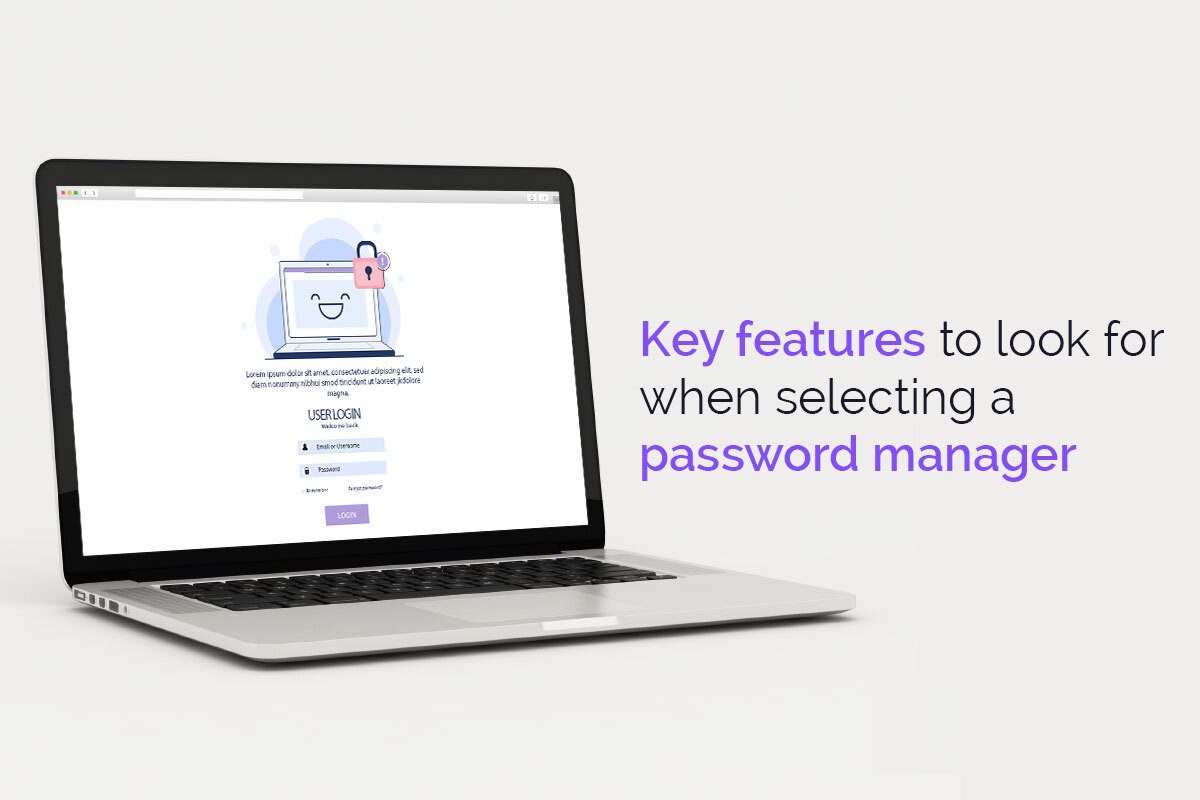Password breaches aren’t uncommon, but they can be quite scary. Cybercriminals can hack into your accounts and steal your identity, data, or money if they know you are reusing passwords. Hackers might even try your credentials on various websites across the Internet.
Therefore, the safest thing to do is to create unique and complex passwords on each website. However, it might be hard to remember many passwords if you have multiple online accounts. So, what should you do?
That’s where password management tools come to the rescue. You can use a password organizer of your choice to help keep your online accounts safe. Password managers help by generating unique passwords, storing all your passwords in one place, etc. Then, all you need to do is remember the password that unlocks the vault of your password management tool. So, you remember one password, and the rest is taken care of by your chosen program. Read along to know the important features you need to consider when choosing a password manager.
The ability to generate unique and complicated passwords
The prominent feature of a password manager would be its ability to quickly generate complicated, hard-to-guess passwords. The passwords generated might use random characters, symbols, or words.
End-to-end protection to protect passwords from third parties
The most crucial feature to look for in password organizers is advanced end-to-end encryption. Ultimately, password management tools are all about data security, and therefore, encryption is required to ensure your data is always safe.
Your data will be indecipherable while at rest and in transit, thanks to encryption. When you want the program to decrypt your data, you must provide a unique authentication key. Only the user will have this key, and therefore, your data cannot be accessed by anyone else. Therefore, even your provider isn’t allowed to access your passwords.
Easy password sharing capability
If you need to use a password management tool for your organization, the tool must offer password sharing. It is an essential feature because password sharing will enable users to share credentials and passwords over secure channels, reducing security risks associated with sharing passwords via SMS, emails, or messenger applications.
Feature-rich and popular password management offer a password sharing option as an in-built feature and makes it hassle-free for users to share passwords, along with other relevant information directly from the app.
Some password managers offer zero-knowledge password sharing. Thanks to this feature, users can share passwords with others in an encrypted fashion. For instance, if an employee needs one-time access to any of your digital services, but you do not want them to see the unencrypted password, you can share with them the encrypted password. It will provide the employee access to the platform, but they won’t know the password. So, they cannot enter the platform unless they are authorized.
MFA or multi-factor authentication
MFA is another important feature of password managers, and it means the app is concerned about the safety of your data and credentials. MFA requires you to log in using your password, along with a secondary form of authentication. Therefore, the feature ensures that if the master password is compromised, their account is safe because nobody can access their accounts without the secondary method of authentication.
The secondary authentication method might be a unique code sent to your phone number or a one-time password generated on the authentication application. In addition, the code or password might be sent to your email address or mobile device. So, if someone is trying to access your account, you will know and can quickly take steps to protect yourself.
If you want to boost the security of your online accounts, MFA is one of the best options. Therefore, it would be best to use password managers with robust MFA capabilities.
Offers role-based permissions
Role-based permission is a must-have feature for enterprise password management programs. If you are using the password organizer to contain all your organization’s passwords, it becomes a security risk in itself. It means that if someone has access to your password manager, they can access your organization’s passwords.
Of course, the last thing you would want is for all your employees to have access to your enterprise’s passwords. That’s why role-based permissions are a key feature, and it enables you to decide and choose who can access which passwords. You need to set this feature up correctly to ensure that employees have access to those passwords that help complete their tasks successfully. It will make your enterprise secure and decrease the number of people who can access each password.
So, these are some of the top features you need to watch out for when looking for password managers. Once you’ve selected a password management tool, you don’t have to worry about remembering all the difficult passcodes of your multiple online accounts.












Leave a Reply